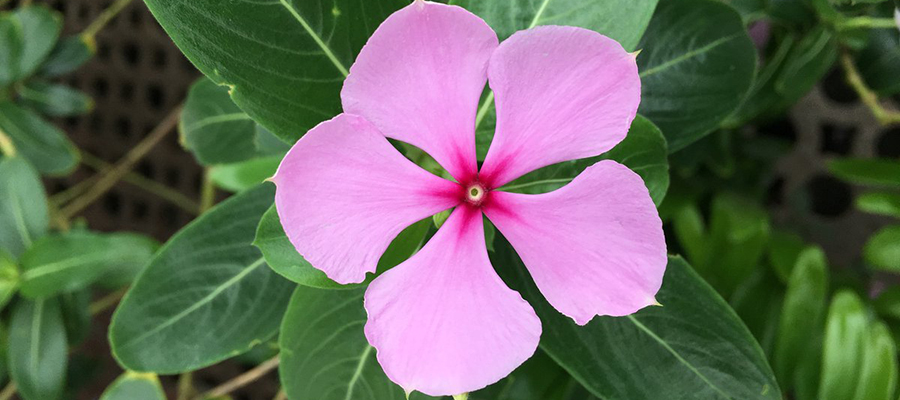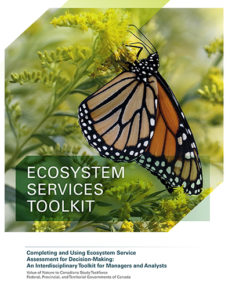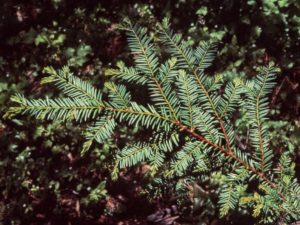
Between 1960 and 1997 the chances of remission for a child suffering from leukemia rose from 10 to 95 percent due to two derived from the Madagascar periwinkle. Medicines from this plant have also been used to treat diabetes and high blood pressure.
Another revolutionary cancer fighting drug, Taxol, was discovered in the bark of the Pacific Yew, a native of old growth forests in the Pacific Northwest.
Medicinal plants that reside in natural areas have received increasing scientific and commercial attention. In the United States, of the top 150 prescription drugs, at least 118 are based on natural sources.
In recent years, studies have found public health benefits from native plant communities as well as individual native plant species. Studies have found stronger immune systems and reduced incidence of asthma for children in areas dominated by native plants compared to areas dominated by non-native plants or pavement. The 2018 Forest Service study is the first to indicate that native plant diversity can protect public health.

Ecosystem Services Toolkit, Canada 2015
Ecosystem services also support health and life (e.g., by providing air, water, food, raw materials, medicines), security (e.g., by mitigating extreme weather events, spread of vector-borne diseases), and quality of life (e.g., by supporting mental and physical health, cultural identity, recreation), among many other things (Ecosystem Services Toolkit, Canada 2015).
Examples and Additional Information
Read about the reduced mortality and substantial mental health benefits of green spaces and native plants in NPCC News
A 2020 study of Los Angeles county urban parks the National Recreation and Parks Association magazine found that access to parks and other high quality green infrastructure substantially increased life expectancy throughout the county. Low income communities of color had significantly less access to such green areas. Read the full report (pdf)
A study carried out in Finland found that the health of the immune systems of children at daycare centers improved when the biological diversity at the centers was increased by adding native and other plants.
Living among diverse native plant communities reduces incidence of childhood asthma in New Zealand
Nature’s pharmacy, our treasure chest — Pamphlet by NPCC and the Center for Biological Diversity
Medicinal Plants at Risk — 2008 Report by NPCC and the Center for Biological Diversity
United Plant Savers’is an organization whose mission is to protect native medicinal plants of the United States and Canada and their native habitat while ensuring an abundant renewable supply of medicinal plants for generations to come.
Mother Nature’s Medicine Cabinet. Scientific American 2001.
Black Cala Lilly — article about cancer-fighting agent made from a lily that grows in Palestine.
Center for American Progress. 2020. When Confronting a Pandemic, We Must Save Nature to Save Ourselves
Urban Nature For Human Health And Well-Being: A research summary for communicating the health benefits of urban trees and green space. U.S. Forest Service. 2018.
Vegetation diversity protects against childhood asthma: results from a large New Zealand birth cohort. Nature Plants 2018
Native Bush Keeps Asthma at Bay — digest of New Zealand study above.
The Influence of Soil on Immune Health – 2020 study supporting the Hygiene Hypothesis in The Scientist
The Hygiene Hypothesis holds that early exposure to diverse microorganisms, such as those that live in diverse native plant communities, builds more robust immune systems in humans.
A 2016 Harvard School of Public Health study of more than 100,000 U.S. women found that living among green spaces and natural areas significantly reduced mortality.
A 2019 study from Aarhus University, Denmark, reviewing data from more than 1 million Danes, reported that children who grow up with greener surroundings have up to 55% less risk of developing mental disorders later in life.
A 2018 Harvard School of Public Health study found that teens living near the highest-quality green space were 11% less likely to be depressed than their peers who lived around the least amounts of lush greenery.
Green therapy: how gardening is helping to fight depression – The Guardian UK
An ecosystem service of biodiversity: the protection of human health against infectious disease. 2012 publication by Felicia Keesing and Richard S. Ostfeld.
Biodiversity and Health. 2011. European Commission Future Brief Review


